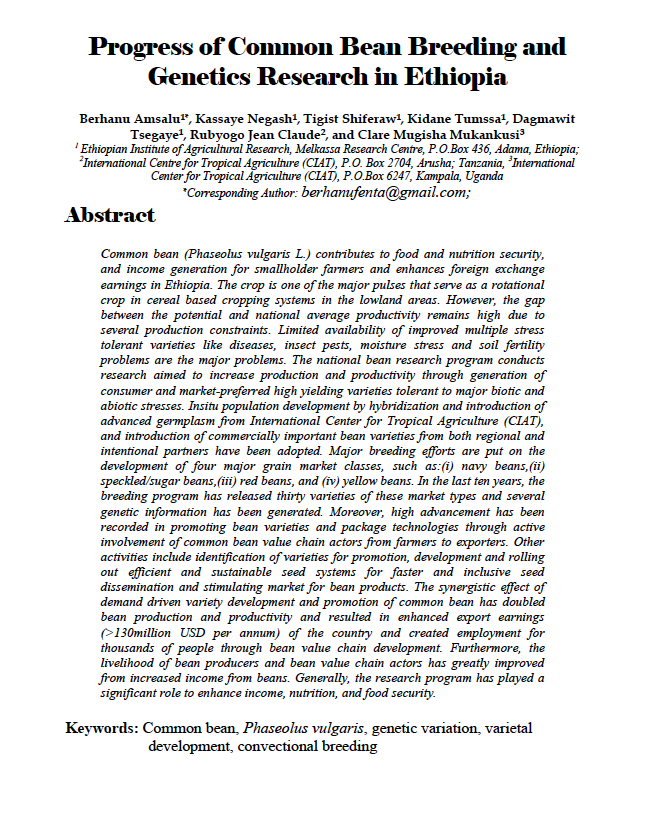Progress of Common Bean Breeding and Genetics Research in Ethiopia
Summary
Common bean (Phaseolus vulgaris L.) contributes to food and nutrition security and income generation for smallholder farmers and enhances foreign exchange earnings in Ethiopia. The crop is one of the major pulses that serve as a rotational crop in cereal-based cropping systems in the lowland areas. However, the gap between potential and national average productivity remains high due to several production constraints. Limited availability of improved multiple stress-tolerant varieties like diseases, insect pests, moisture stress, and soil fertility problems are the major problems. The national bean research program conducts research aimed to increase production and productivity through generation of consumer- and market-preferred high-yielding varieties tolerant to major biotic and abiotic stresses. In-situ population development by hybridization and introduction of advanced germplasm from the International Center for Tropical Agriculture (CIAT), and the introduction of commercially important bean varieties from both regional and intentional partners have been adopted. Major breeding efforts have been put into the development of four major grain market classes: (i) navy beans, (ii) speckled/sugar beans, (iii) red beans, and (iv) yellow beans. In the last 10 years, the breeding program has released 30 varieties of these market types and genetic information has been generated. Moreover, high advancement has been recorded in promoting bean varieties and package technologies through active involvement of common bean value chain actors, from farmers to exporters. Other activities include identification of varieties for promotion, development, and rolling out of efficient and sustainable seed systems for faster and inclusive seed dissemination, and stimulating the market for bean products. The synergistic effect of demand-driven variety development and the promotion of common bean has doubled bean production and productivity and resulted in enhanced export earnings (>USD 130 million per annum) for Ethiopia while creating employment for thousands of people through bean value chain development. Furthermore, the livelihood of bean producers and bean value chain actors has greatly improved from increased income from beans. Overall, the research program has played a significant role in enhancing income, nutrition, and food security.
Open resource Download resource Access resource on external site

